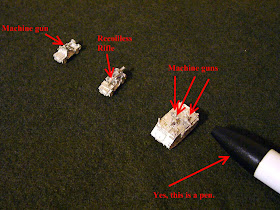
Okay, so what's a guy like me who writes about toy soldiers doing in a
Writing Sex Scenes workshop?
Because as Deborah Schneider said in class: "Sex sells!"
 Deborah Schneider, one of the workshop presenters is the author of Beneath a Silver Moon and the upcoming novel Promise Me. Her website can also be found under the Author's Section of this blog: http://www.debschneider.com/index.php
Deborah Schneider, one of the workshop presenters is the author of Beneath a Silver Moon and the upcoming novel Promise Me. Her website can also be found under the Author's Section of this blog: http://www.debschneider.com/index.php
The numbers confirm her statement, since by 2000, romance novels outstripped all other literary genres:
http://en.wikipedia.org/wiki/Romance_novel (Scroll down to "Markets: North America").
It truly is a New Millennium and some of us would like to be published authors before the end of it. But writing is more than just hitting publishing high notes. Love of the craft drives writers to create an enjoyable reading experience for their audience. One key element in accomplishing this is to develop realistic characters, or acurate portrayals of historic figures, that will keep readers engaged in the story. How the protagonist wrestles with love & romance can be just as important as to how well he braves shot & shell.
My own writing comes up short on this score: While I've written articles about the heat of battle, I have yet to transcribe anything about the heat of passion. It's not that I'm inhibited, just unskilled at coupling the necessary pieces for an arousing love scene. Not to mention bringing an entire book-length manuscript to a satisfying climax.
Fortunately authors like Deborah Schneider and Chris Humphreys are an unabashed and encouraging pair for a novice like me.
 Chris, or C.C. Humphreys, is the author of the Jack Absolute and Runestone series, along with several other hisorical novels. His webiste is can also be found under the Author's Section of this blog: http://www.cchumphreys.com/Site_2/Welcome.html
Chris, or C.C. Humphreys, is the author of the Jack Absolute and Runestone series, along with several other hisorical novels. His webiste is can also be found under the Author's Section of this blog: http://www.cchumphreys.com/Site_2/Welcome.htmlDespite this stellar line-up, I wasn't planning on attending this course. A couple of years ago I sat-in on a similar PNWA workshop and I assumed it was like some of the x-rated movies I've...um...heard about. A case of "you've seen one, you've seen 'em all," so to speak.
Well the previous night I struck up a conversation with Chris while purchasing a couple of his Jack Absolute books. During the course of our chat I discovered he use to play wargames too. So while I spent the rest of our talk trying to rekindle his interest in wargaming he convinced me to attend his and Deborah's workshop the following day.
"It will be fun!" He assured me.
And it certainly was.
Here's some of the few notes I managed to take:
The main question you have to ask yourself is: What are you trying to achieve by incorporating one or more sex scenes into your narrative?
The primary goal of any sex scene is to
move the story forward. Otherwise you're just writing porn.
One effect a sex scene achieves is that it reveals more about the character than is otherwise known by the rest of the cast in the story.
People often act different behind closed doors and readers become privy to such intimate details.
Relationships are the key element in romance novels. Without a relationship beyond sex, you're not writing a romance novel, you're back to writing porn.
Two points of view are necessary for a successful romance: The hero's and heroine's.
The language used in a romance is also part of the appeal, especially when writing historical romances, which must fit the period and setting of the story.
Even if you're not writing romance, the protagonist should have a romantic interest as I mentioned in my
Novel to Script post.
Clothing--especially lingerie--can be used to heighten the effect. You can add different layers and style of clothing too. Such as having your protagonist dress in conservative outer garments, but underneath--see the "behind closed doors" comment above. Or as Deborah said: "Think Victoria's Secret!"
Engage all the senses when writing a sex scene, not just sight. Taste, touch, smell and sound all come into play during intimate moments. Doing so amplifies the sensuality of the scene and builds sexual tension.
However, the hero and heroine often want more than sex. Either or both may have other goals and desires that may put them in conflict with others--or each other. Remember: Conflict fuels the story!
And while "sex sells"
you want to write within your comfort level and at the same time keep in mind what genre or sub-genre you're writing in. For instance, there's no sex until the "I dos" are exchanged--and after the wedding guest have left--in Christian or inspirational romance. The same might be said for Young Adult (YA) novels, but Deborah pointed out some YA books series contain very explicit content.
The bottom line is: Writing sex scenes, like sex itself, should be an enjoyable experience. Once it becomes a chore, your work will become flaccid. So don't worry about satisfying your audience with your first draft. Writing the first draft should be a gratifying experience for yourself.
What ever your comfort level is your readers will learn what to expect and what not to expect from you.
Despite the candid banter of this workshop there are some definite prohibitions in writing romance: No rape, pedophilia, bestiality or any other depraved actions are allowed.
So an hour-and-a-half workshop boiled down to 401 words of notes?
Not quite.
Both Deborah and Chris read excerpts from their respective novels to illustrate what makes a good sex scene.
Deborah treated us to the scene in
Promise Me where the heroine, Amanda Wainwright tried to seduce Secret Service Agent Samuel Calhoun. By the time Deborah finished reading, Amanda was on Sam's lap and her little black dress was about ready to fall to the floor...
Chris took us back to 18th Century London, where Jack Absolute decided to lay on the charm with actress Fanny Harper in
The Blooding of Jack Absolute. This scene involved erotic poetry, candied peaches, a hooped skirt and other sorts of Age of Reason fashion contraptions. Unfortunately for Jack, Fanny was Lord Melbury's kept woman and said lord picked an inopportune time to pay a visit to his main squeeze...
These scenes played pivotal roles in advancing the plot in both stories:
Agent Calhoun is an undercover operative working to expose fraud within a mining consortium. Assuming they have a loyal employee, the consortium wants Sam to seduce and humiliate Amanda in order to put her out of business. However, complications arise when Agent Calhoun finds himself under the covers servicing Ms. Wainwright instead of faking it with the consortium. This is a perilous position for both of them, because if Sam keeps it up with Amanda he could have his cover blown.
Meanwhile, back in the 18th Century Jack wasn't as adept as Sam at laying-low. Jack was discovered in an entangled position by the irate Lord Melbury, forced to flee London and join the army. He eventually found himself a continent away, scaling the cliffs onto the Plains of Abraham before the walls of Quebec. Thanks to some derring-do on Jack's part the English won the battle against the French and Canada was incorporated into the British Empire.
Or as Chris put it: If Jack didn't try to have sex with Fanny, he wouldn't have fled London, he wouldn't have joined General Wolfe's invasion force and Canada would still be French to this day!
Talk about "moving a plot forward."
Fortunately most sexcapades don't have such sweeping geopolitical repercussions. But discussing ramifications of romance wasn't the only amusing moment in this class.
During Deborah's reading one young lady left just as Amanda & Sam were getting tongue tied. The lady in-question stood up, fanned her face with her hand and gasped, "This is too hot for me!"
Maybe it was. But I think she actually had an appointment with an agent and played the moment up for maximum comedic effect.
Then there was the woman who wanted to write about her sexploits after divorcing her dull and unimaginative husband. While this "got the attention of every guy in the room," as my friend Alynn put it, she did bring up a good point: If you're writing a memoir, how much explicit content do you include in your own tell-all tale?
Such a "cumming-of-age stories" as Chris called them, can be stimulating stuff indeed. However once again, you should keep the primary thrust of your experiences in mind. That is, they must move the story forward.
Oddly enough, our self-revealing heroine seemed uncomfortable divulging her conjugal activities to her family. For her touchy situation it was suggested she use a pen name to avoid shocking the tender sensibilities of her relatives.
The next workshop I attended was the
Habits of Successful Professional Writers which will be the subject of my next post. As an aspiring writer, I felt I needed all the professional help I could get. Sadly this conflicted with
The Nitty Gritty: Writing Sex and Romance for Fantasy and Science Fiction.
Sigh.
I'm a big fan of both sci-fi and fantasy, but I guess there's only so much sex--writing at least--I can take...


















































